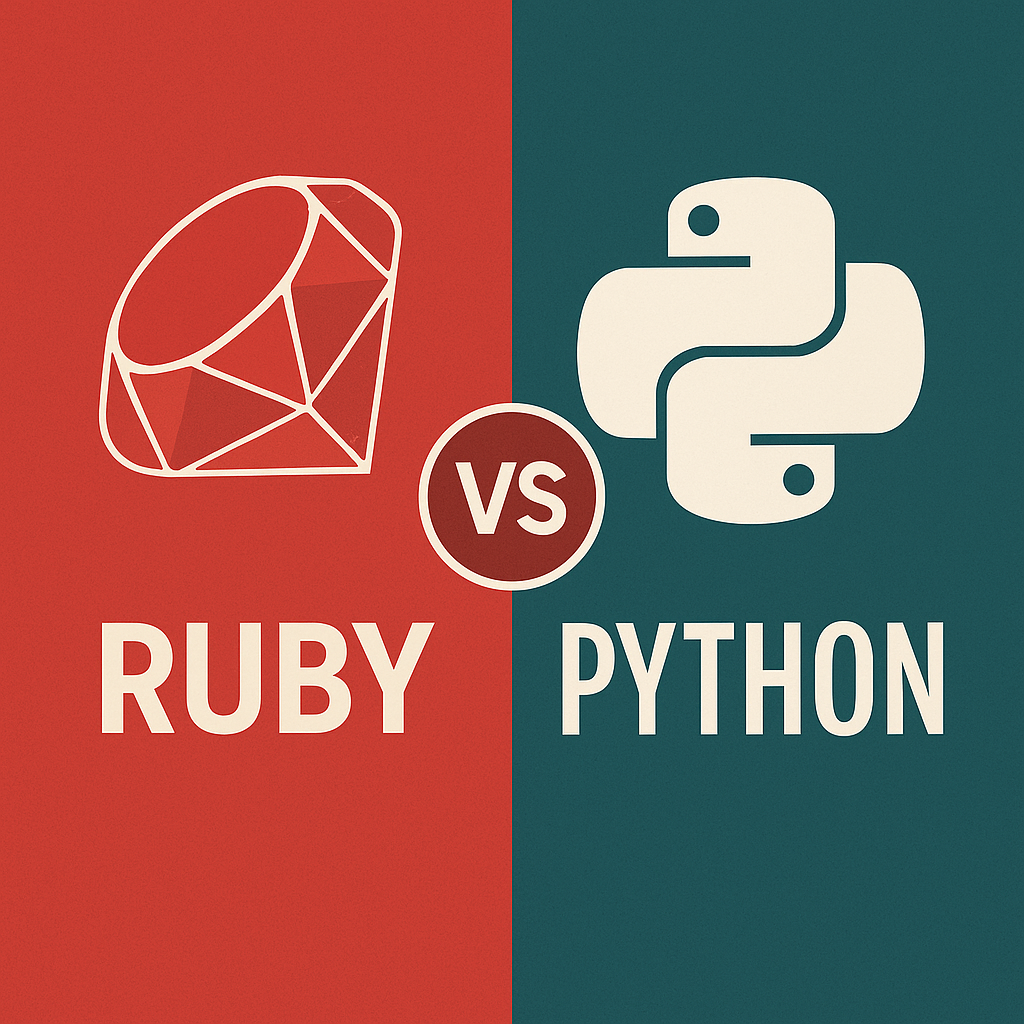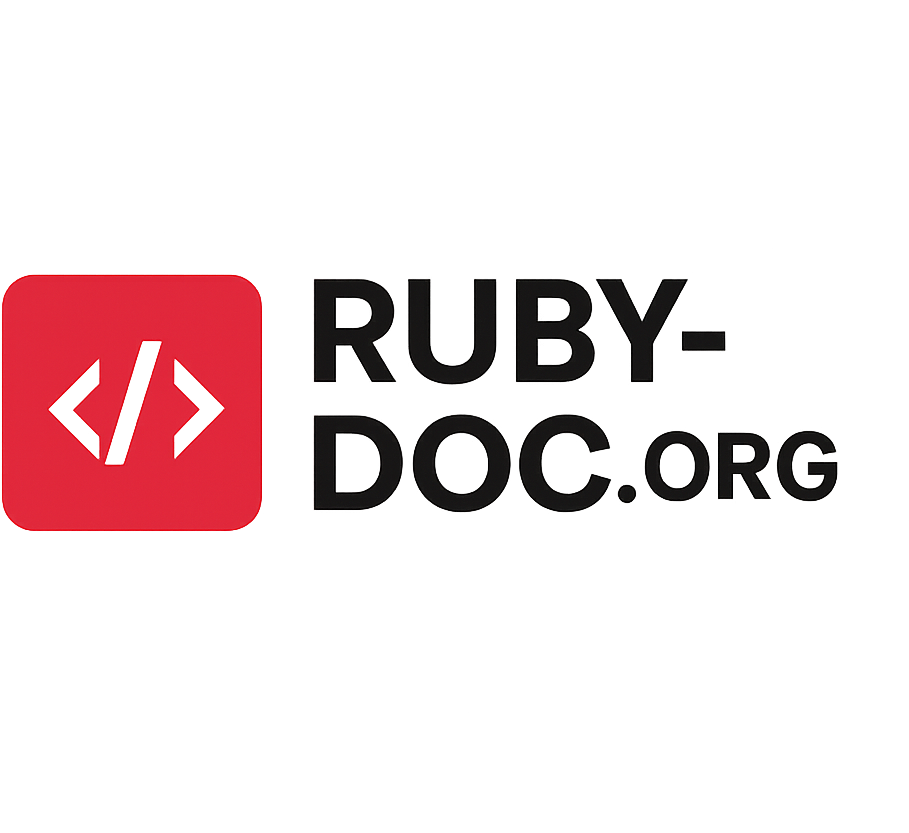
The choice between Ruby vs Python is a frequent debate among developers, especially those new to programming or evaluating technologies for their next project. Both languages are high-level, dynamically typed, open-source, and have vibrant communities backing them. They were created with a similar goal—to simplify programming by making code more readable and expressive. However, each language has evolved along distinct paths, gaining prominence in different domains and ecosystems.
In this article, we’ll dive deep into Ruby vs Python, comparing their syntax, performance, use cases, frameworks, community support, learning curves, and more. By the end, you’ll be better equipped to choose the right language for your specific goals in 2025 and beyond.
Table of Contents
- Introduction to Ruby and Python
- Language Design Philosophy
- Syntax and Readability
- Performance Comparison
- Use Cases and Industry Adoption
- Ecosystem and Frameworks
- Community Support and Resources
- Learning Curve and Developer Experience
- Job Market and Career Opportunities
- Tooling, Libraries, and Package Management
- Debugging and Testing
- Future Outlook: 2025 and Beyond
- Final Thoughts: Ruby vs Python – Which Should You Choose?
1. Introduction to Ruby and Python
Ruby
Created in 1995 by Yukihiro “Matz” Matsumoto, Ruby was designed to be a developer-friendly language with a focus on productivity and joy. It gained massive popularity through the Ruby on Rails framework, which revolutionized web development by emphasizing convention over configuration.
Python
Developed by Guido van Rossum and first released in 1991, Python has always emphasized code readability and simplicity. Over time, it evolved into one of the most versatile programming languages, used in everything from web development and automation to data science and machine learning.
2. Language Design Philosophy
The core philosophies behind these languages greatly influence how they’re written and used.
Ruby’s Philosophy
Ruby prioritizes developer happiness. It embraces multiple programming paradigms (object-oriented, functional, imperative) and gives developers freedom to choose their approach.
Key Tenets:
- “There’s more than one way to do it.”
- Focus on elegant syntax.
- Heavy use of meta-programming and DSLs (Domain-Specific Languages).
Python’s Philosophy
Python is driven by simplicity and readability (read more). Its design is influenced by The Zen of Python, a collection of 19 guiding principles that emphasize clarity and uniformity.
Key Tenets:
- “There should be one—and preferably only one—obvious way to do it.”
- Minimalistic and explicit.
- Designed to be easy to learn and teach.
3. Ruby vs Python – Syntax and Readability
In a head-to-head comparison of Ruby vs Python syntax, both are clean and readable—but they differ in style and philosophy.
Python Example:
pythonCopyEditdef greet(name):
print(f"Hello, {name}!")
Ruby Example:
rubyCopyEditdef greet(name)
puts "Hello, #{name}!"
end
Python’s reliance on indentation enforces a strict structure, which improves consistency across projects. Ruby, on the other hand, is more flexible and expressive but can appear more abstract, especially to newcomers. Here are some Ruby Code Examples.
4. Ruby vs Python – Performance Comparison
Both Ruby and Python are interpreted languages and are generally slower than compiled languages like C++ or Rust. However, there are nuances in performance depending on the task.
Python:
- Python 3.12 introduced significant performance improvements.
- The CPython interpreter is still the default, but alternatives like PyPy offer Just-In-Time (JIT) compilation.
Ruby:
- The Ruby 3.x series focused on performance, aiming to be 3x faster than Ruby 2.
- YJIT (a JIT compiler by Shopify) and MJIT are part of Ruby’s performance arsenal.
Verdict: Python generally has better performance for computational tasks, while Ruby is optimized for developer productivity and fast iteration cycles in web applications.
5. Use Cases and Industry Adoption
The Ruby vs Python debate often comes down to what you’re building.
Ruby Is Popular For:
- Web applications via Ruby on Rails.
- Prototyping MVPs quickly.
- Startups needing rapid development.
Companies using Ruby: GitHub, Shopify, Airbnb (historically), Basecamp.
Python Is Popular For:
- Web development (Django, Flask)
- Data Science and Machine Learning
- Scripting and Automation
- DevOps and Infrastructure
- AI/ML with TensorFlow, PyTorch
Companies using Python: Google, Instagram, Netflix, Dropbox, Reddit.
6. Ecosystem and Frameworks
Ruby Ecosystem
- Ruby on Rails (RoR): Still one of the most influential web frameworks.
- Sinatra: A lightweight alternative for microservices.
- Jekyll: Popular for static site generation.
Python Ecosystem
- Web: Django, Flask, FastAPI
- Data Science: Pandas, NumPy, Scikit-learn, Matplotlib
- AI/ML: TensorFlow, PyTorch, Hugging Face
- Automation: Selenium, Paramiko, Ansible
Winner: Python has a broader and deeper ecosystem that spans multiple disciplines.
7. Community Support and Resources
Both Ruby and Python boast large, supportive communities.
Ruby:
- Rails community is tight-knit and very developer-focused.
- Resources are curated, but not as abundant as Python’s.
Python:
- One of the largest open-source communities globally.
- Abundance of free tutorials, courses, libraries, and forums.
- Supported by institutions like Google and the PSF (Python Software Foundation).
Verdict: Python has a larger and more diverse global community, especially beneficial for beginners.
8. Learning Curve and Developer Experience
Ruby:
- Known for elegant and human-readable code.
- Great for those coming from object-oriented backgrounds.
- Developers often find Ruby “fun” to write.
Python:
- Arguably the easiest programming language to learn.
- Designed to be intuitive and accessible to non-programmers.
- Widely taught in schools, bootcamps, and universities.
Verdict: Python wins in terms of ease of learning and accessibility, though Ruby remains highly enjoyable for experienced developers.
9. Job Market and Career Opportunities – Ruby vs Python
Let’s compare Ruby vs Python in terms of real-world job opportunities.
Ruby:
- Steady demand, but largely tied to Rails.
- Concentrated in startups and legacy Rails projects.
- Fewer jobs overall compared to Python.
Python:
- Explosive growth due to AI/ML, DevOps, and backend development.
- Found in academia, finance, healthcare, and big tech.
- Python is consistently ranked among the top programming languages by TIOBE and Stack Overflow surveys.
Verdict: Python offers more diverse and abundant career opportunities in 2025.
10. Tooling, Libraries, and Package Management
Ruby:
- Gem is Ruby’s package manager—easy to use and very developer-friendly.
- Tools like Bundler make dependency management smooth.
Python:
- pip is the default package installer.
- Poetry, pipenv, and conda offer enhanced dependency management.
- Virtual environments are essential for managing project-specific dependencies.
Verdict: Both ecosystems have mature tooling, but Python’s broader use has led to more modern options and wider adoption.
11. Debugging and Testing
Testing and debugging tools are vital for maintaining code quality.
Ruby:
- Testing is deeply integrated into the Ruby culture.
- Frameworks like RSpec, Minitest, and Capybara provide expressive syntax for behavior-driven testing.
- Excellent support for mocking and stubbing.
Python:
- Testing frameworks like unittest, pytest, and nose2 are widely used.
- Debugging with
pdb,ipdb, or IDE tools like PyCharm make debugging painless.
Verdict: Ruby has a slightly more expressive testing culture, but Python’s tooling is broader and more integrated into varied disciplines.
12. Future Outlook: 2025 and Beyond
Python:
- Continues to dominate in AI, data science, and automation.
- Major updates and community momentum ensure its long-term viability.
- Python 3.12 and future versions focus on performance and concurrency improvements.
Ruby:
- While no longer as hyped as during the Rails boom, Ruby is far from dead.
- Ruby 3 and its performance improvements have revitalized interest.
- Rails 7 brought Hotwire and Turbo, refreshing modern web development.
Verdict: Python is on a steeper upward trajectory due to diversification. Ruby remains niche but dependable.
13. Final Thoughts: Ruby vs Python – Which Should You Choose?
So, when it comes to Ruby vs Python, the best choice depends entirely on your goals:
| Criteria | Ruby | Python |
|---|---|---|
| Web Development | ✅ Excellent (Rails) | ✅ Excellent (Django, Flask) |
| Data Science | ❌ Not widely used | ✅ Industry Standard |
| AI/ML | ❌ Limited tools | ✅ Leading language |
| Automation/Scripting | ✅ Great for simple scripts | ✅ Best choice |
| Learning Curve | ✅ Beginner-friendly | ✅ Extremely beginner-friendly |
| Job Market | ⚠️ Smaller, Rails-focused | ✅ Broad and growing |
| Community | ✅ Passionate and focused | ✅ Massive and active |
| Future Prospects | 🔁 Steady | 📈 Expanding rapidly |
Choose Ruby if:
- You’re building a web app quickly with a small team.
- You love elegant, expressive code.
- You’re working in a startup or maintaining a legacy Rails project.
Choose Python if:
- You want a language that adapts to multiple domains (data, AI, automation).
- You value consistency and wide adoption.
- You’re just starting your programming journey.
Summary
Ruby vs Python isn’t about one language being “better” than the other—it’s about suitability. Ruby shines in developer productivity and clean web development, while Python is a powerhouse of versatility, dominating data science and automation in 2025.
Both languages have stood the test of time, continue to evolve, and support rich ecosystems. Your best bet is to choose the language that aligns with your project goals and personal interests. In many cases, learning both can be a valuable investment in your programming career.
